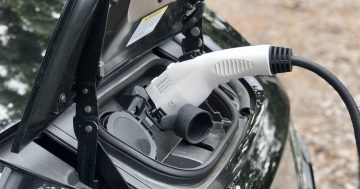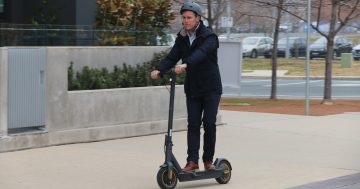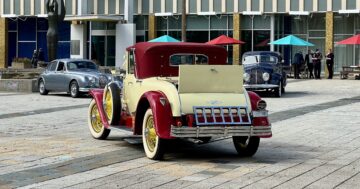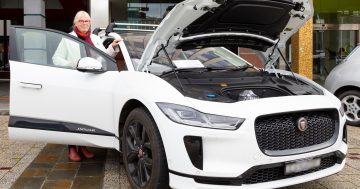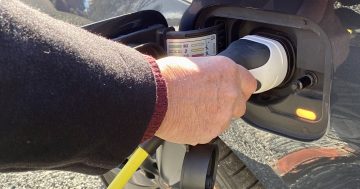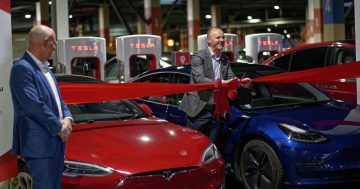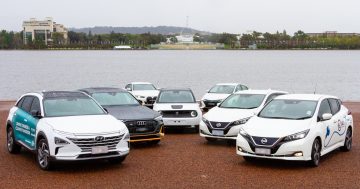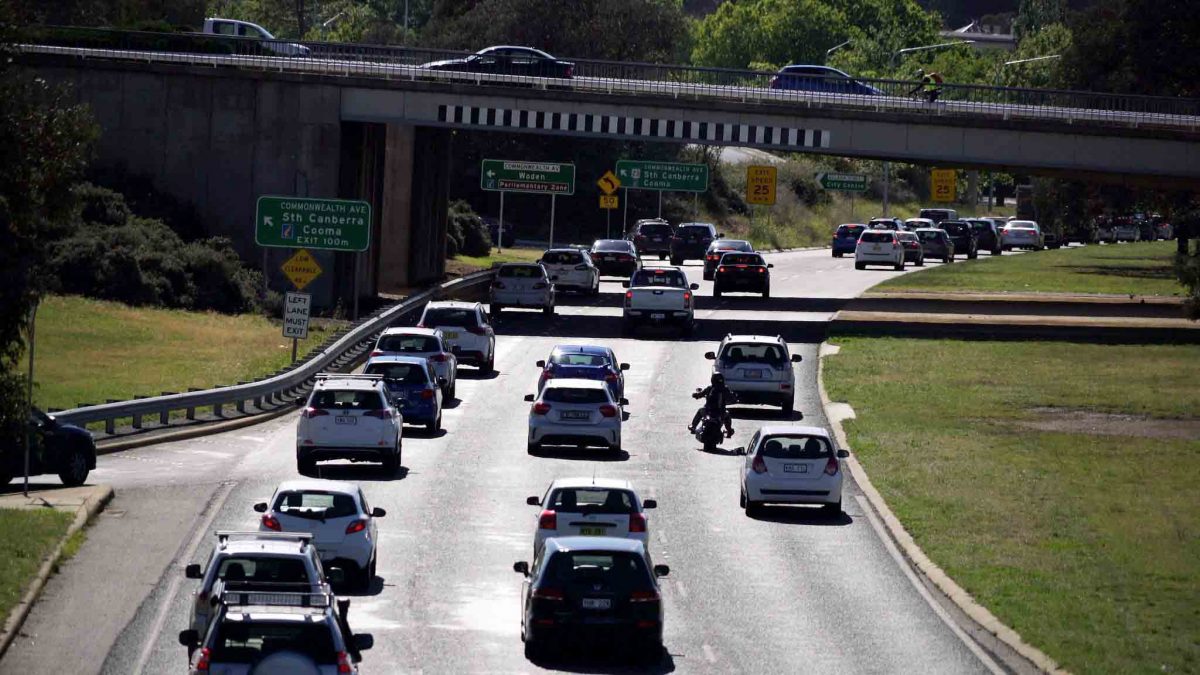
Traffic on Parkes Way, one of the city’s only east-to-west arterial roads. Photo: ACT Government.
Every year on or around 22 September, people across the globe leave their cars at home and get on a bike or catch the bus for World Car-Free Day.
The UN-sanctioned event is designed to showcase what it might look like, feel like and sound like to do without a car for 365 days a year.
Nice idea? Cheaper certainly. But would it work in Canberra – a place famous for its dependency on cars for getting around the spread-out design and equally infamous for its public transport network?
Well, the ACT Government – hell-bent on slashing the Territory’s emissions to net zero by 2045 – is “vigorously” working on it.
“Works are underway vigorously at the moment so we can describe it in more detail in the next few months,” Minister for Climate Change and Sustainability Shane Rattenbury told Region.
But before your mind leaps to visions of fines being handed out to Canberrans who dare to press the start button on 22 September, 2023, a car-free day isn’t necessarily a car-free day.
“It’s marked in different ways in different places,” Mr Rattenbury said.
“It’s the idea of thinking about how we transport ourselves and what we want our city to be like. It’s about reclaiming space for citizens instead of cars.”
For Canberra, think of it more as a promotional campaign than an outright ban.
“We’re still shaping the final design, but it will be a ‘here’s how you can do it differently if you want to’ event,” he said.
“There will still be days in which people need to drive their cars. But there are plenty of other days and plenty of other trips we do … when we don’t have to just fall into the habit of taking the car.

Minister for Climate Change and Sustainability Shane Rattenbury with an electric Nissan Leaf. Photo: ACT Government.
“There are good alternatives, whether that be light rail, buses, cycling, e-bikes, scooters, even down to walking. There are a lot of different ways to get around the city, but often people don’t know that because they’ve never tried them.”
Mr Rattenbury said the event’s emphasis would be on displaying these “many options” to Canberrans.
As for when, our ”car-free day” won’t be held on the actual day, which falls on a Friday this year.
“We’re looking to do something on the weekend in springtime,” he said.
“We’ll have an official announcement on that, but not for a little while. There’s a lot of design work to go through, consulting with the community and organisations that would partner with us on this.”
Mr Rattenbury expected a “good reaction”, based on Canberra’s interest in the EV Expo hosted by the Australian Electric Vehicle Association (AEVA) and held at Exhibition Park in Canberra (EPIC) in August last year. This showed off a variety of electric transport options, from cars to scooters.
“Many thousands of Canberrans turned out for the event and there was a real enthusiasm,” he said.
“So I think there is a thirst in the Canberra community for exploring the alternatives, and we want to make sure we put together a really good event so people do come along and have that opportunity.”
Canberra’s bus network has received criticism for years for trips that take longer than driving a car, despite recent shakeups to the timetable, which only seem to have made the situation worse for many.
Similarly, a 2021 study by the University of Adelaide revealed Canberra cyclists often felt unsafe on our roads. The data found 12.3 per cent of cars were getting within 1.5 metres of cyclists when passing them at speeds above 60 km/h, a breach of the ACT’s traffic laws.
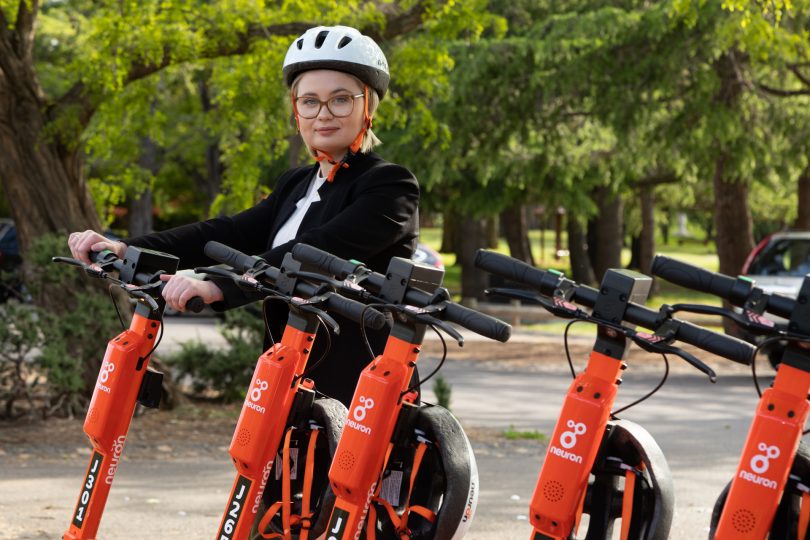
Could you take an e-scooter to and from work? Photo: Michelle Kroll.
Mr Rattenbury admitted there were a “whole lot of things we need to do to make sure people feel the alternatives are safe, comfortable, reliable and meet their needs”.
“Whether that is more off-road cycling lanes so people feel comfortable cycling on the road, continued improvement of the bus network, the rollout of more stages of light rail – even down to things like improved lighting so people feel safe if they’re moving around in the dark – these are all the things that provide people with a sense the alternatives are viable for them.”
Over the next few years, the Government will focus on its commitments to electrify the city and phase out fossil-fuel gas by 2045, and ban the sale of new fossil-fuel-powered vehicles by 2035.
“It’s going to take a lot of work to change our habits in that space, but I think we’ve put policies in place and we need to focus on implementing them,” Mr Rattenbury said.












